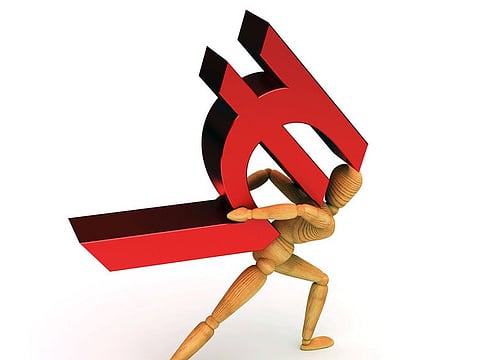The China growth model isn’t what India should aim for
Next government should allow individual states and their leaders to take the initiative

When Narendra Modi became India’s prime minister in 2014, one hope was that he would do for the country what he had done as chief minister in the state of Gujarat: build a fast-growing economy with an efficient bureaucracy and advanced factories attracting billions of dollars in investment from multinational corporations. A Modi-led India was even touted as the next China.
Five years later, with Modi seeking a second term in the general election that is now underway, it is clear that he won’t make India the next China - because it was never possible.
The countries have nothing in common other than populations of more than 1 billion people. China is a one-party autocracy that mobilized its homogeneous Han, Mandarin-speaking majority behind a decades-long campaign of radical reform. India is a diverse, multi-party democracy that will always struggle to rally its hundreds of ethnic and linguistic minority groups behind any single goal.
What Modi proved in Gujarat was that a strong leader can command change in India, but only one state at a time. In his first term as chief minister between 2002 and 2007, Gujarat’s economy grew at a nearly 12 per cent pace annually, the fastest ever recorded in any major Indian state, under any chief minister.
As prime minister, Modi has been unable to generate the same kind of performance for the Indian economy as a whole; it has rumbled along at a rate of 6-7 per cent - far below the double-digit gains recorded by China in the 1990s, when it was at the same level of development that India is today.
Fed up with the stagnation and chaos suffered under Mao Zedong, China’s communist bosses began loosening their control of the economy in the late 1970s. They freed rural Chinese to till their own land or leave the interior provinces in search of work. They created economic zones free of heavy bureaucratic control in coastal cities, where new jobs flourished.
When the government closed thousands of rusting state factories, millions of fired workers poured into the burgeoning private sector.
India has never risked anything like mass firings and large-scale migration to promote growth, in large part because its democratic leaders fear that voters would punish them for the short-term upheaval and pain. India has thus seen a much more gradual shift from rural to urban, farm to factory, state to private sector, than China has.
Most Indians still live and work on a farm; the population is about 70 per cent rural. Booming new cities are as rare in India as they are common in China. Many business sectors in India remain largely owned and operated by the inefficient state.
India has tinkered with free-market reform, but only under pressure from economic crises, not as a steady long-term strategy. In his first term as prime minister, Modi continued on a path of gradual change, acceptable to the countless communities in India’s fractured electorate. He has not even pushed to privatize the bloated state banks, which are a major obstacle to faster growth.
Already, one outcome of the 2019 election (now in the midst of a five-week voting period) is entirely predictable, based on the party manifestos recently released by Modi and the main opposition parties. Instead of economic reform, the manifestos offer handouts that will leave the overburdened state-less money to invest in roads, ports and electricity plants.
The world’s most populous nations have chosen fundamentally different paths: free-market communism in China, state-dependent democracy in India.
Does this suggest that India would be better off under an autocratic government?
Not at all. For every authoritarian success story such as China’s, there are multiple failures - in Cuba, in Venezuela, in North Korea. China got lucky with strong economic leadership. It is an exceptional case, not a model.
Centralised rule is particularly ill-suited to India, where many of the 29 states see themselves almost as separate countries. Whenever prime ministers try to concentrate power in Delhi, as Indira Gandhi did in the 1970s, they have triggered a backlash, often spurred by state leaders.
India is more a continent than a country, its states more varied in language, culture and ethnicity than the nations of Europe. Its economy is best managed one state at a time, by a democratic leader close to local conditions.
There is still reason to believe in India’s economic prospects, but hope won’t come from the prime minister’s office in Delhi; it will come from dynamic chief ministers in the state capitals. These figures often double as leaders of their own regional parties.
At the moment, the conventional wisdom is that Modi and his party are likely to return to power but with fewer seats in Parliament, which would leave him more dependent on regional leaders.
That would not be a bad outcome. India is better off accepting its exuberantly diverse and democratic nature, and giving its state leaders more authority to govern themselves, than trying to be the next China.
— Washington Post
Sign up for the Daily Briefing
Get the latest news and updates straight to your inbox

